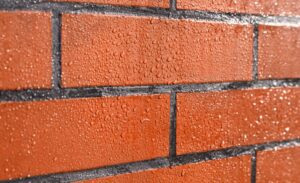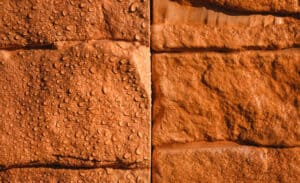How To Seal Bricks From Water
 If left untreated, bricks can absorb a significant amount of water. When this happens, it can limit the integrity of a wall and potentially cause structural issues. Additionally, if the bricks in the walls of your home absorb water, it could lead to a range of problems, including damp inside the property or mould growth.
If left untreated, bricks can absorb a significant amount of water. When this happens, it can limit the integrity of a wall and potentially cause structural issues. Additionally, if the bricks in the walls of your home absorb water, it could lead to a range of problems, including damp inside the property or mould growth.
However, you can seal bricks to prevent them from absorbing water, thus protecting the property or the integrity of a wall. Before you do this, however, be sure to assess the brickwork for signs of damage. If there are holes in the brickwork, for example, these should be repaired before you seal the bricks.
Selecting a Water Repellent
 Before you begin sealing bricks from water, you’ll need to find a repellent that’s suitable for use. Properties are constructed from different types of bricks, so be sure to choose a product that’s appropriate for the materials used to construct the wall. To prevent any aesthetic damage, it’s advisable to apply the water repellent to a small, inconspicuous patch of wall before you get underway.
Before you begin sealing bricks from water, you’ll need to find a repellent that’s suitable for use. Properties are constructed from different types of bricks, so be sure to choose a product that’s appropriate for the materials used to construct the wall. To prevent any aesthetic damage, it’s advisable to apply the water repellent to a small, inconspicuous patch of wall before you get underway.
Sealing Exposed Brickwork
If the brickwork is unpainted and untreated, you can use a façade cream to protect the bricks from water penetration. This soaks into the wall and reduce the ability of the bricks or mortar to absorb water, thus protecting the property from damp. Although a façade cream will prevent water absorption, it won’t stop air from circulating through the property. This is important, as a poorly ventilated property can cause a range of issues too.
You’ll find that there are many sealants available for this job too. However, traditional sealants are not generally ‘breathable’, which means they can cause ventilation problems. If you want to use a sealant, be sure to choose a product that’s breathable and designed to facilitate air flow.
Sealing Treated Walls
If a brick wall has been treated or painted, it may already have some level of protection from penetrating damp. By adding a water-repellent ‘paint’ or liquid, you can enhance this protection and keep the brickwork in good condition.
Typically, you’ll need to clean the wall and remove any unwanted coatings before you get started. Then, you can simply use a brush, roller or spray to add the repellent to the exterior face of the wall.
Although façade creams and water repellents aren’t designed to last forever, they can protect brickwork for 20-30 years, which means it’s a simple task that offers long-lasting benefits.
